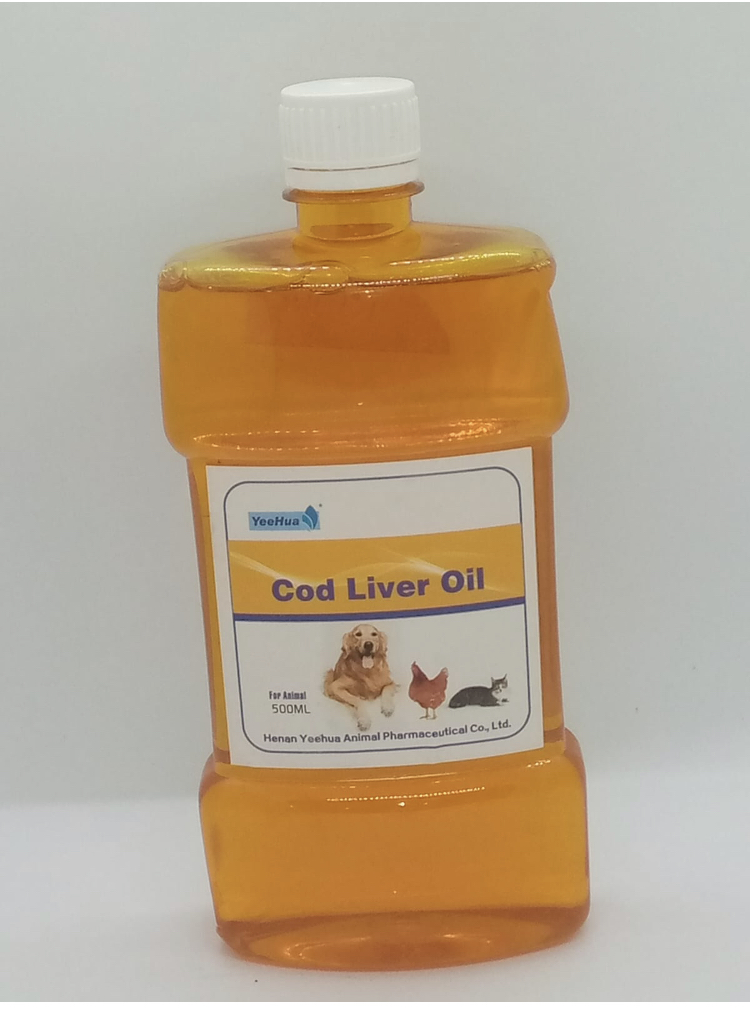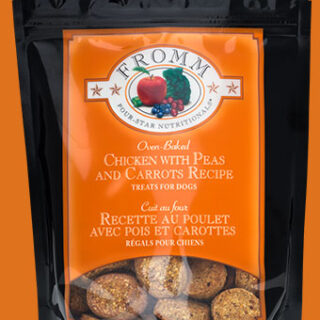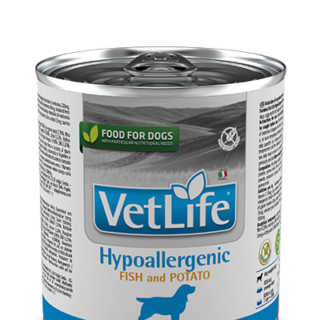Your cart is currently empty!

Single Product
Cod liver oil 250ml
Cod liver oil 250ml: People dont like the taste, but dogs love cod liver oil. Thats convenient, because cod liver oil is inexpensive, easy-to-use canine health insurance. Centuries ago, people in the fishing communities of Scotland, Greenland, Iceland, and Norway thrived despite their intensely cold winters by taking a daily dose of cod liver oil.…
Description
Cod liver oil 250ml: People dont like the taste, but dogs love cod liver oil. Thats convenient, because cod liver oil is inexpensive, easy-to-use canine health insurance.
Centuries ago, people in the fishing communities of Scotland, Greenland, Iceland, and Norway thrived despite their intensely cold winters by taking a daily dose of cod liver oil. By the 1800s, folks around the world were taking a tablespoon a day because it relieved aching muscles, stiff joints, and rheumatism in addition to improving overall health.
In the 1950s, scientists discovered that essential fatty acids in cod liver oil improve heart and circulatory system health.
The vitamins in cod liver oil have been proven essential for growth, healthy bones, proper development of the brain and nervous systems, normal sexual development, and a strong immune system.
And scientists are still studying cod liver oil. In 2002, researchers in Wales found that cod liver oils omega-3 fatty acids disable enzymes that destroy cartilage. As a result, cod liver oil delays and even reverses the irreversible destruction of joint cartilage and inflammatory pain associated with arthritis.
All of cod liver oils human benefits are shared by dogs, including improved memory function, reduced behavioral disorders, and enhanced immunity.
Its definitely a miracle food, says nutritionist Krispin Sullivan, CN. There is hardly a disease in the books that does not respond well to treatment that includes cod liver oil, and not just infectious diseases but also chronic modern diseases like heart disease, cancer, and diabetes.
How Did We Discover Cod Oils Benefits?
In Europe and North America, rickets used to be a common illness. Without vitamin D, calcium salts are not deposited in bones in sufficient quantity to make them rigid. As a result, soft bones bend out of shape.
In 1892, a British scientist discovered a connection between the geographic distribution of rickets and sunlight. The more sunlight a region had, the fewer rickets cases it reported. In 1913, researchers at the University of Wisconsin showed that lactating goats kept indoors lost substantial amounts of skeletal calcium, while those kept outdoors did not. (Osteomalacia, or adult rickets, is a softening of bone caused by progressive decalcification.) Six years later, a German scientist cured children of rickets using artificially produced ultraviolet light. Two years after that, researchers at Columbia University cured children of rickets by exposing them to natural sunlight.
Though the sunlight connection was well established, no one understood how or why it worked. Then in 1918, British physician Sir Edward Mellanby, who was searching for a nutritional cause of rickets, tested oat porridge, the staple food of Scotland, for its effect on bone health. His test subjects were dogs. He fed them nothing but oats and kept them indoors throughout the experiment, and they promptly developed rickets. When he cured the dogs by feeding them cod liver oil, Mellanby assumed that the oils newly discovered vitamin A had repaired their bones. This was a logical assumption, for cod liver oil is the worlds most concentrated food source of vitamin A, containing more than four times the vitamin A of beef liver, the next most concentrated source.
However, at Johns Hopkins University, Professor E.V. McCollum proved that this was not the case. The cod liver oil he heated and aerated to destroy its vitamin A content no longer cured night blindness (which vitamin A prevents), but it did continue to cure rickets. This meant that cod liver oil must contain a previously unknown essential nutrient. In 1922, McCollum published his results and, in keeping with the practice of naming vitamins in alphabetical order, called his discovery vitamin D. Later research proved that sun exposure on the skin produces vitamin D, hence its sunshine vitamin nickname.
Newer Research on Cod Liver Oil
Although cod liver oil is not as widely used as it was a hundred years ago, it is still easy to find, inexpensive, and even more beneficial than early researchers realized.
For example, cod liver oil greatly improves heart function and treats it even in advanced stages by healing the lining of damaged arteries. Cod liver oils omega-3 fatty acids and vitamins A and D facilitate mineral absorption, improve muscle function, and support elasticity of the blood vessels. In addition, inflammation-reducing prostaglandins made from EPA (one of cod liver oils essential fatty acids) help inhibit inflammatory responses in the arteries.
Cod liver oils vitamin A strengthens the immune system, fights infection, heals the skin, repairs the digestive tract, is essential to the formation of bones and teeth, aids in fat storage, stimulates new cell growth, and improves the bodys utilization of protein. Cod liver oil taken by nursing mothers improves the fatty acid profile of breast milk to promote optimal brain development, and it increases vitamin A levels, which help prevent infection. However, cod liver oil does not increase the vitamin D content of breast milk.
In more than 40 human trials, vitamin A has been shown to reduce morbidity and mortality of infants and children, and cod liver oil was the supplement of choice in many of these trials. Books on feeding infants published in the 1930s and 1940s routinely recommended cod liver oil, says Sullivan, starting with 1 teaspoon at the age of three weeks. It was Dr. Spock who threw this wisdom out the window by recommending vaccinations instead of the powerful nutritional support of cod liver oil.
The easiest way to give cod liver oil to infant puppies is to use an eyedropper to place a few drops on the mothers nipples or directly into the puppies mouths. Start with 1 drop per 4 ounces (¼ pound) of body weight per day. As puppies grow, give 3 to 4 drops per pound of body weight. Puppies weighing 6 pounds should receive 1/8 teaspoon per day, and pups weighing 12 pounds need ¼ teaspoon per day.
Like our human population, Americas dogs are increasingly susceptible to obesity, insulin resistance, and adult-onset diabetes. Cod liver oil has been used in clinical trials on humans with insulin-dependent and non-insulin-dependent diabetes. In both conditions, cod liver oil improved glucose response and other markers of the disease. In 2001, Finnish scientists reported that infants who received vitamin D were much less likely to develop juvenile or adult-onset diabetes than those who did not. In addition, vitamin A in cod liver oil helps promote healing and protects the retinas of diabetic patients.
Even colitis (inflammation of the colon) responds more effectively to the type of omega-3 fatty acids in cod liver oil than to medication. And lets not forget cancer, whose epidemic rise coincides with Americas declining cod liver oil consumption. Vitamin A has been part of nearly every nutritionally based cancer therapy.
How You Administer Cod Liver Oil Matters
Eating fish, even oily fish, will not provide the levels of nutrients found in cod liver oil, and taking fish oils is not the same as taking cod liver oil. Salmon oil, which has significant health benefits, has only one-fifth the potency of cod liver oil.
Most cod liver oil has a vitamin D to vitamin A ratio of 1 to 10. If a teaspoon of cod liver oil contains 500 International Units (IU) of vitamin D, it contains about 5,000 IU vitamin A. However, some brands, such as Carlson Labs, which is sold in health food stores, have a much lower vitamin A ratio. One teaspoon of Carlson Labs cod liver oil contains 500 IU vitamin D and only 1,250 IU vitamin A. This proportion helps prevent vitamin A toxicity, especially in dogs who eat large amounts of beef liver or receive vitamin A from other sources.
Heavy metals and other contaminants are always a concern when dealing with ocean fish, but all cod liver oil sold in the United States is tested according to protocols of the Association of Analytical Communities. It must be found free of detectable levels of 32 specific contaminants, including mercury, cadmium, lead, and PCBs, before it can be imported.
Cod Liver Oil Dosage and Cautions for Dogs
A teaspoon of cod liver oil contains 45 calories. The recommended cod liver oil dose for dogs who do not receive other sources of vitamins D and A is ¼ teaspoon for dogs weighing 10-15 pounds; ½ teaspoon for 25-pund dogs; 1 teaspoon for dogs weighing 50 pounds; 1½ teaspoons for 75-pound dogs; and 2 teaspoons for dogs weighing 100 pounds. These doses have been used for decades with dogs who fast one day per week (no cod liver oil on fast days) as well as dogs who are fed every day.
But for dogs who eat a commercial diet, cod liver oil supplementation can be dangerous, because commercial pet foods contain vitamins A and D. In most cases, these vitamins are synthetic rather than from food sources. Although the synthetic vs. food-source debate continues to be lively, a growing number of researchers and nutritionists have found that food-source vitamins are more effective at smaller doses because they are more easily assimilated than synthetic vitamins.
Dogs fed a home-prepared diet derive far more than vitamins A and D from cod liver oil, which is itself an argument for home feeding. Another argument is Sir Edward Mellanbys canine rickets experiment. During his research, Mellanby discovered that phytic acid in grains and legumes blocks mineral absorption. Grain-based foods can be difficult for dogs to digest, and can contribute to deficiencies of zinc and other minerals.
Before deciding on the dose to use, consider how much sun exposure your dog receives, the time of year, and your location. Dogs who live outdoors in the southern United States may absorb vitamin D by grooming themselves and other dogs, even though they do not absorb it directly through the skin the way humans do.
In Americas middle latitudes, the sun does not produce vitamin D throughout the year. For example, in New York City, the suns angle prevents vitamin D production from October through April. Dogs who live outdoors during summer months in New York City and similar latitudes may need less (such as half the recommended dose) during the summer. Dogs living in New England, other Northern states, and Canada receive little or no vitamin D from the sun even in the middle of summer. They will not require a dose reduction.
Vitamins D and A are toxic in excess, so overdoses must be avoided. Many puppies and dogs have died from swallowing tubes of vitamin D-based medications for psoriasis and other human skin conditions. If you spill cod liver oil, dont let your dog lick it up. If you feed a commercial pet food that contains vitamins A and D, dont give your dog cod liver oil in addition.
Last, feed saturated fats like butter or coconut oil in combination with cod liver oil. The body needs saturated fat in order to absorb and assimilate the fat-soluble vitamins (A, D, E, and K). Flaxseed oil and other vegetable oils do not provide saturated fats and do not enhance the absorption of fat-soluble vitamins. An easy rule of thumb is to give equal amounts of cod liver oil and saturated fat, so for every teaspoon of cod liver oil, give your dog a teaspoon (or more) of butter or coconut oil.
A regular contributor to WDJ, CJ Puotinen is also the author of The Encyclopedia of Natural Pet Care, Natural Remedies for Dogs and Cats, and several books about human health including, Natural Relief from Aches and Pains.





